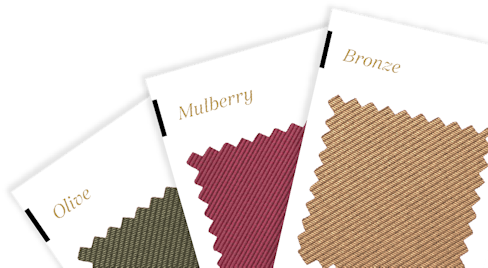A Complete Guide to a Formal Dress Code

Just got engaged? Check out our new Groom's Guide!
Whether it’s a wedding, party, dinner, or ball, a formal dress code is the golden standard for many special events and occasions. The formal dress helps set the tone for the event, providing a sense of harmony and helping every guest look their best.
However, formal dress codes can be a little confusing to understand, especially when you dig into the specifics of black tie, white tie, and so on. This guide is here to help, covering all you need to know about formal attire for weddings, business events, cocktail parties, and more.
Key Takeaways
So, what is formal attire for business events, weddings, and other formal events?
- Wedding formal attire for men generally involves wearing dark suits (black, navy, or charcoal), a neatly pressed white dress shirt with a tie or bow tie, and dress shoes.
- Formal dress codes for women attending a wedding typically involve wearing floor-length gowns; if it’s a bit less formal, cocktail dresses or a dressy pantsuit look appropriate.
- Business formal dress codes are the highest level for professional settings. To create a professional image, wearing formal attire that is neatly pressed with no sign of wrinkles is essential.
- No matter what type of formal event, wearing polished and refined attire is key.
The Spectrum of Dress Codes
There are a multitude of dress codes that can appear on invitations to weddings, galas, parties, and more. Understanding the unique features and differences between them is key to dressing well and avoiding any fashion faux pas.
White Tie
White tie is the most formal dress code of all. As explained in Vogue, its origins date back to the Victorian era, when it was favored by dandies and gentlemen, moving across the pond in the latter 19th century.
If you’re invited to a white tie event, expect to see men wearing almost identical outfits, consisting of traditional black tailcoats and white bow ties. Women, meanwhile, will wear full-length fancy evening gowns, often with elegant long gloves as their main accessory.
Black Tie
Black tie is a close relative of white tie, and the two share many features. Like white tie, black tie has its origins in Great Britain, first emerging during the Regency period. It’s a popular choice for weddings, providing that Bridgerton or Downton Abbey vibe that many modern couples crave.
For black tie events, men should dress in tuxedos. As the name of this dress code suggests, they should wear black bow ties, and it’s typical to have a black jacket, white shirt, and black shoes, too. Women typically wear long, floor-length dresses or gowns from classy materials like silk.
Black Tie Optional
“Black tie optional.” That phrase has appeared on countless wedding invites over the years and often confuses those who aren’t in the know and up-to-date with the minutiae of formal dress codes.
Typically, black tie optional actually means “black tie preferred.” It usually implies that the hosts would ideally like as many people to wear traditional black tie – tuxes and long gowns – as possible, but are willing to accept suits and other elegant dresses, too. Understanding the difference between formal attire vs. black tie is key to picking the ideal outfit ahead of a black tie optional event.
Business Formal
Business formal is a dress code almost exclusively reserved for business and corporate events. This includes the likes of conferences, meetings, business dinners, and fundraisers.
The business formal look is all about clothes that one would expect to see in a business setting. This means suits and shirts for both men and women, with ladies also able to wear skirts or suit pants, but not dresses.
Cocktail Attire
Cocktail attire is for more laid-back events that aren’t quite as formal or fancy as nights at the opera or grand charity galas. These events tend to be more relaxed, with lots of dancing and a more fun vibe, with looser outfit restrictions.
If you’re invited to a cocktail attire event, men can wear dark suits or simply shirts and waistcoats. Ladies, meanwhile, can try on their favorite cocktail dresses, which usually end at the knee and are made from light, lacy fabrics.
Dressy Casual
Dressy casual or smart casual events aim to strike a balance between a casual and formal dress code. If you see dressy casual on your invite, it means that you shouldn’t lean too far into casual tees and jeans, but don’t need to turn up in a full suit or evening gown, either.
This is quite a versatile dress code. Men can wear the likes of shirts, waistcoats, jackets, or even smart sweaters, while women can pick from blouses, skirts, and different types of dresses in almost any color.
Casual
Last but not least, we have the most informal dress code of all: casual. Casual attire is comfortable and laid-back, including colorful shirts and blouses, T-shirts, sweaters, and pants.
However, even a casual dress code has its limits. Typically, if hosts request casual clothing, there are still certain outfits they won’t want to see, like T-shirts with silly slogans, tank tops, or outfits that are excessively revealing.
Dressing for Weddings: Decoding Invitations
Figuring out the dress code on a wedding invite is absolutely essential to avoid turning up in the wrong attire.
White Tie Wedding
A white tie event is the most formal kind of wedding. All male guests will be expected to wear tailcoats and white bow ties, and ladies should opt for their most elegant, full-length gowns.
Black Tie Wedding
At a black tie wedding, men will need to wear black or very dark tuxedos, along with black bow ties. Ladies should typically choose full-length gowns.
Black Tie Optional Wedding
Similar to a general black tie optional event, it’s best to wear a black tie outfit if you can. If not, men should wear classic dark suits while ladies should choose dark, elegant dresses.
Business Formal Wedding
If you’re invited to a business formal wedding, expect it to feel like more like a business gathering than a typical wedding. Men should wear suits and shirts, while women should wear suits with skirts or pants.
Cocktail Wedding
At a cocktail wedding, you can play around with colors and more casual, comfortable attire. Men’s cocktail attire for a wedding can include colored suits and waistcoats, while women can opt for a dress made from lace or chiffon.
Dressy Casual Wedding
For a dressy casual wedding, find an outfit that is comfortable while still looking smart or elegant. Should you wear a tie to a wedding if it’s dressy casual? Probably not, but a simple tie and shirt combo won’t necessarily look out of place. Ladies can opt for blouses, skirts, or dresses.
Deciphering Other Formal Events
Weddings aren’t the only formal events you might get invited to. Here are some other examples, along with outfit recommendations.
Business Meetings & Conferences
Business meetings and events tend to have either business formal or business casual dress codes. For formal, full suits are needed. For casual, it’s possible to simply wear a shirt for men or a blouse and skirt combo for women.
Cocktail Parties
Most cocktail parties will have either a cocktail or semi-formal dress codes. For a cocktail code, women should wear cocktail dresses, and men can wear light suits or shirts and ties. Semi-formal is quite similar, but opens up more dress and skirt options for ladies.
Formal Gala or Opera
At a grand formal gala or night at the opera, it’s important to select a highly sophisticated outfit to look the part. This is the kind of event where statement jewelry and the most beautiful (and expensive) dresses and suits get dusted off for the occasion.
Key Pieces for Men and Women in a Formal Dress Code
This section will look at some of the main items of clothing to add to your wardrobe if you’re planning to attend formal events in the foreseeable future.
For Men
For a wardrobe suitable for formal dress code events, the attire for men includes a smart tuxedo, at least a couple of suits at least, and a range of smart shirts, and dress shoes. Accessories may include bow ties, standard ties, belts, watches, and cufflinks.
If you want to make your closet future-proof, Steve Harvey says there are “five suits you need to get: black, navy, grey, brown, tan.” Then get a few white, powder, and crème-colored shirts. That allows you to seamlessly combine shirts with suit jackets and pants, and you can “make 75 suits with those combinations.”
For Women
For women, it helps to have a selection of gowns to use for formal events. Opt for gowns and dresses of different lengths so that you can adjust your outfit for white tie, black tie, and formal events. Skirts, blouses, and fancy jewelry can also be useful when attending special occasions.
Outerwear for Formal Events
We’ve discussed and answered the question of what formal attire is. So, how about outerwear for formal events? Outerwear typically involves clothing you wear over other garments, whether for warmth or style. When it comes to the types of formalwear for men and women, it’s best to leave denim jackets and hoodies in the closet.
A dark blazer, a dark-colored suit, or a tuxedo jacket is a must for men. A tailcoat can also be worn for high-profile events or white tie weddings.
Women can select from many types of formal wear. When it comes to formal dress codes and outerwear, a structured Merino wool blazer is an excellent choice for layering over formal gowns and floor-length dresses.
Tips to Navigate a Formal Dress Code With Ease
Many people can feel confused or overwhelmed when receiving an invite to a formal dress event. However, the following top tips can help you blend in, look your best, and get the best look, no matter the dress code.
Importance of Fit and Tailoring
Ultimately, when it comes to a formal dress code, fit is one of the most important factors of all. A simple suit that fits well always looks better than a fancier suit with the wrong fit. So, when picking an outfit for any formal event, ensure that it fits correctly around your frame.
That means that if you choose to rent a tuxedo, you’ll need to get the size just right. Or, for ladies, consider a tailor-made dress to suit your form. If the fit doesn’t look or feel correct, get the necessary alterations before the big day or night.
Renting vs. Buying Formalwear
How often do you attend weddings and business events? If it's only occasionally, renting is typically a better choice when the event calls for a formal dress code or if you don’t attend formal events often. Renting is much more cost-effective than buying and convenient, especially when you have a selection of different types of formal wear.
Other factors to consider are maintenance costs. When you rent, there's no need to worry about cleaning or storing. Also, consider current fashion trends. If you buy an outdated suit, you're stuck with it until the style is in vogue again.
Accessory Etiquette
Accessories can complete both formal and casual outfits, but it’s important to use them appropriately for the occasion. For black tie events, for example, opt for subtle, elegant options, like black leather watches and cufflinks for men or beautiful earrings for women.
While it may be tempting to wear a bold and beautiful item of jewelry as a wedding or formal event guest, you also don’t want to appear to be trying to take attention away from the bride or groom. For that reason, simpler, subtler options are often the best choice.
Understanding the Setting
When considering your outfit for a formal event, take some time to consider the setting. Will it be a day or night event? What will the venue be like? What is the nature of the event? By answering these questions, you can narrow down your choices.
Let’s say that you’re heading to a formal business evening dinner, for example. In that case, smart suits are the obvious option for comfort and class. But, if you’re heading to an daytime wedding reception, with dancing and an outdoor venue, you may prefer something that lets you move around more comfortably, while also providing protection against the elements.
Choosing the Right Shoes for Formal Events
Understanding formal attire and how to wear it appropriately doesn’t end with suits and evening gowns. It also means choosing the right shoes that adhere to the formal dress code of your event. Classic and elegant styles work best for men, like Oxfords and black patent leather shoes.
Women can opt for elegant heels, dressy flats, or court shoes. Black goes with everything, so it’s a go-to shoe color for formal events.
FAQs and Common Misconceptions
How to adapt formal wear for different seasons?
Adapting to different seasons means adjusting your layering and swapping fabrics that best suit the season. Merino wool has natural thermoregulating properties, so it can keep you cool in hot weather and warm when it’s cold. Formal wear crafted with wool, silk, and linen blends is ideal for summer events. Men can also consider wearing a vest for added warmth. Women can add a stylish blazer to wear over an evening gown during cold-weather events.
Is black tie the same as formal?
No, there is a clear distinction between black tie and formal dress codes. Black tie refers to a very specific type of dress, with tuxedos and bow ties for men and floor-length gowns for women. The term “formal attire” is more general, relating to smart suits, shirts, dresses, blouses, and other items. Somewhat paradoxically, general formal attire is less formal than black tie.
Can you wear colors other than black and white for formal events?
Absolutely, but it all depends on the nature of the event and the dress code in question. Grander and more formal events tend to have stricter dress codes, but often still allow for at least a small range of color options. For most formal events, darker tones tend to be favored, like navy blue, charcoal gray, and dark brown or black. Women tend to have more flexibility and color options for dresses than men.
What’s the difference between a cocktail dress and an evening gown?
Evening gowns are traditionally much longer and larger than cocktail dresses, often reaching right down to the floor, while cocktail dresses go no lower than the knees. Gowns also tend to be made of heavier, richer fabrics, like silk, while cocktail dresses can be made of lace or chiffon, for example.
Conclusion
Formal dress codes have evolved and changed in many ways over the years. The modern-day interpretation of black tie, for example, is a far cry from the original version, which emerged in the Regency period of England.
Modern standards tend to be a little more lenient and versatile, opening up new outfit options and interpretations. However, it’s still important to honor and respect the traditional elements of a formal dress event.
Smart suits, glamorous dresses, classy ties, and elegant heels all help to elevate an occasion. They can make weddings more magical, dinners more beautiful, and experiences more memorable. So, the next time you receive an invite to a formal event, be sure to dress appropriately.

Roshana Pourvakil
Roshana Pourvakil has been with Generation Tux since 2022, combining expertise in weddings, formalwear, and fashion with a passion for impactful marketing. She values the transformative power of suits and tuxedos, blending timeless sophistication with modern style. Her work includes leading campaigns and creating narratives that inspire unforgettable wedding moments.
Link to bio pageFeatured Products
Get started.
Stylish suits and tuxedos delivered straight to your door. See our collection and rent now.

